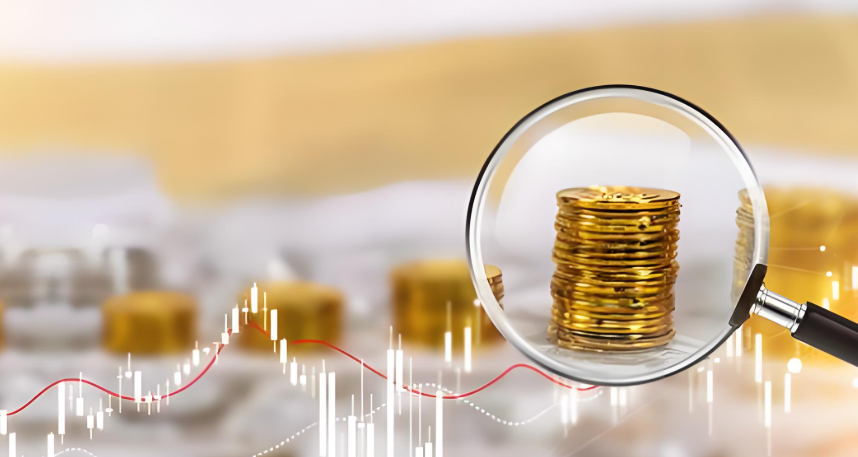Gold, Silver Seen Rebounding After Dip
Advertisements
The world of financial markets often dances to the rhythm of uncertainty, influenced by a myriad of factors ranging from geopolitical tensions to shifts in monetary policyAs we enter 2024, the precious metals market, particularly gold, remains a focal point of interest, attracting investors with its allure of safety amid changing tidesThe recent fluctuations in gold prices exemplify how market dynamics can be both predictable and erratic, driven by external pressures that resonate through the economic landscape.
Gold began this year with a mild upward tick in the Asian market, settling around the $2635 per ounce mark shortly after the new year's openingThis modest increase came on the heels of a significant uptick the previous days, where gold prices closed at approximately $2624.28, reflecting a 0.72% gainThe overarching narrative in the gold market is characterized by a remarkable rise of about 27% over the past year, marking the most substantial annual increase since 2010. Such growth has been largely attributed to a combination of safe-haven demand and the dovish stance taken by central banks around the world.
The prevailing atmosphere, however, hints at a cautious sentiment among market participants
This trepidation is largely predicated on the evolving policies in the United States, which could potentially reshape the economic landscapeIn tandem with these developments, the U.Sdollar index reached a two-year high, while the ten-year treasury yields enjoyed their best annual performance in over two yearsThese movements typically create ripples in the gold market, as the precious metal competes with yielding assets for investor interest.
In this context, the Asian markets observed a notable absence of trading activity from New Zealand and Japan on January 2nd, which might have contributed to the lower volatilityAs the European and U.Smarkets opened for trading, investors were keenly awaiting key economic indicators such as the manufacturing Purchasing Managers' Index (PMI) for January, as well as updates on jobless claims from the previous weekThese indicators serve as bellwethers for broader economic health, informing investors' strategies as they navigate these uncertain waters.
Gold’s ascent in 2024 is not without its challenges
- The AI Luminescence of a Spectral Chip
- Gold and Silver Soar to Expectations
- U.S. Stocks Fall After 25 Basis Point Rate Cut
- Gold, Silver Seen Rebounding After Dip
- Solid-State Battery Hype: Three Points for Consideration
Although central banks have displayed strong purchasing tendencies, the unresolved geopolitical uncertainties and the loose monetary policies in many regions will likely play significant roles in shaping future gold pricesThe record-breaking high of $2790.15 achieved in late October 2023 could bolster expectations, yet these aspirations might collide with the potential for inflationary pressures that could alter interest rate trajectories, thereby influencing demand for gold as a hedge against market volatility.
Moreover, while gold basked in the glow of a prosperous year, silver mirrored this trend as it also recorded its best year since 2020, with an increase of nearly 22% through 2024. However, the same cannot be said for platinum and palladium, which bore the brunt of annual declines exceeding 8% and 17%, respectivelyThis disparity underscores the varying dynamics at play within the precious metals market, wherein each asset reacts differently to economic stimuli.
On the American front, a new wave of economic policies aimed at stimulating growth is on the horizon
These policies include deregulations for businesses, tax cuts, increased tariffs, and aggressive stances against illegal immigrationThe intention behind these moves could escalate inflation and increase demand for the dollar, which in turn would boost U.STreasury yieldsConsequently, these developments create a complex landscape wherein while investor sentiment may favor safe havens like gold, there are equally compelling reasons for allocation towards dollar-denominated assets.
Transitioning to the technical analysis of gold for traders reveals a scenario of careful navigation amidst fluctuating price pointsOn the last trading day, gold opened around $2605, with initial resistance near $2602 before staging a solid rebound through the European and American sessionsClosing near $2627, this marked a daily upward trend unmistakably indicative of bullish momentumAnalysts cite the Bollinger Bands stabilizing, coupled with moving averages indicating upward trajectories and supporting increased bullish trading strategies.
For traders looking to capitalize on these movements, entry strategies could include positions in gold near support levels—potentially around $2620 to $2622, with projected targets between $2635 to $2680, while maintaining stops to mitigate risks

Conversely, traders eyeing potential short positions might look towards $2688, crafting their stop-loss protocols appropriately to manage exposures.
Turning to silver, the market dynamics presented a different picture, characterized by low volatility and minimal movements throughout the trading sessionsOpening at approximately $28.94, silver struggled to attract significant attention, oscillating within tight rangesYet, the technical indicators suggest underlying potential for recovery, particularly as traders are urged to identify strategic entry points around lower boundaries, particularly around $28.82, while eyeing upward targets around $30.18.
Oil markets, equally crucial to the economic narrative, provided their own story of fluctuationsAfter opening near $70.88, prices ebbed and flowed before pushing into the high $71 territory, reflecting an upward trend supported by robust data and underlying bullish sentiments
Traders in the crude oil market have many similar tactics as those for gold, with specific entry points recommended near $70.8, targeting substantial rises across key resistance marks.
The interplay of these markets underscores a critical lesson for investors and traders alike: the necessity to remain adaptableAs economic indicators unfold and geopolitical situations evolve, the ability to pivot between long and short positions based on emerging trends is paramount for sustained profitabilityThe landscape of precious metals trading will continually present challenges and opportunities, urging participants to align their strategies with real-time data and objective technical analyses.
In conclusion, while the beginning of 2024 has started on an optimistic note for gold and silver, the caution wrapped in the potential shifts in U.Seconomic policy serves as a reminder of the complexities inherent in financial markets